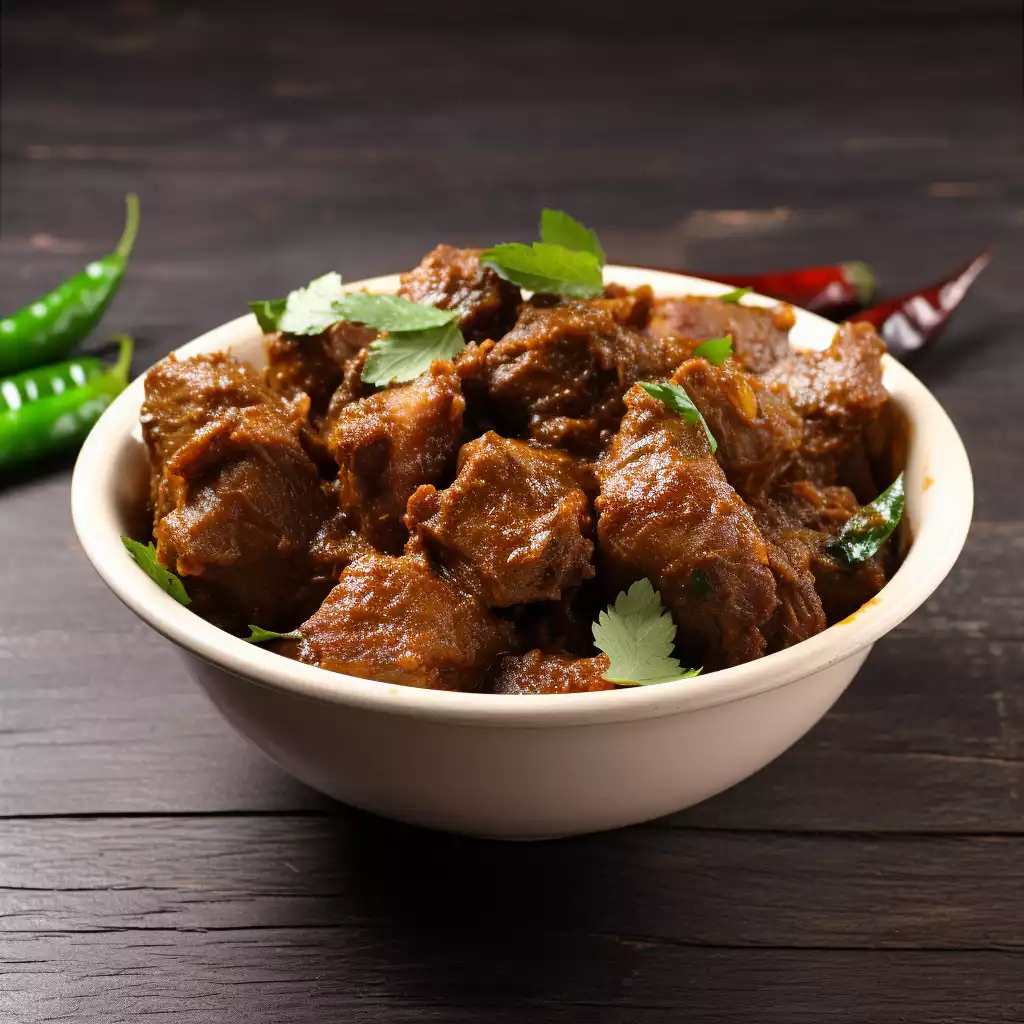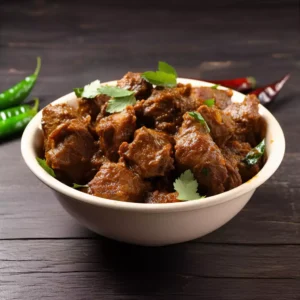
Welcome to the world of flavors from Maharashtra, India! Today, I’m excited to share with you a recipe that packs a punch of spicy and aromatic goodness: Mutton Kolhapuri.
Originating from the vibrant city of Kolhapur, this dish is renowned for its bold flavors and rich taste. While it may seem daunting at first, fear not, as I guide you through each step to create this delectable masterpiece right in your own kitchen.
Mutton Kolhapuri is a dish deeply rooted in tradition, with a history dating back generations. It’s a staple in Maharashtrian cuisine, often served during festive occasions and family gatherings. The key to its irresistible taste lies in the Kolhapuri masala, a unique blend of spices that infuses the dish with layers of flavor.
Though the ingredient list may seem long, each component plays a crucial role in achieving the authentic taste of Mutton Kolhapuri. From tender mutton marinated in a flavorful spice mix to the fragrant Kolhapuri masala, every step is worth the effort.
Expert Tip: Allow the mutton to marinate for at least 2 hours, or preferably overnight, to ensure it absorbs the flavors of the spices thoroughly.
Mutton: Mutton brings a rich and meaty flavor to Mutton Kolhapuri. Marinated in a blend of spices, it becomes tender and succulent during cooking.
Turmeric Powder: Known for its vibrant color and earthy flavor, turmeric powder adds a beautiful hue to the dish while enhancing its aroma.
Chili Powder: Adding heat and depth of flavor, chili powder is essential for achieving the signature spiciness of Mutton Kolhapuri.
Ginger Paste and Garlic Paste: These aromatic pastes infuse the mutton with a warm and pungent flavor, complementing the spices in the dish.
Coconut Oil: Traditionally used in Maharashtrian cuisine, coconut oil lends a subtle sweetness and richness to the dish.
Onion and Tomatoes: Providing the base for the Kolhapuri masala, onions and tomatoes contribute sweetness and tanginess, balancing the spice levels.
Cumin Seeds, Mustard Seeds, Curry Leaves, Cinnamon, Cloves, Cardamom Pods, and Bay Leaf: These whole spices form the foundation of the Kolhapuri masala, imparting a depth of flavor and aroma to the dish.
Coriander Powder, Cumin Powder, Paprika, Fennel Seeds, Peppercorns, Fenugreek Seeds, and Dried Red Chilies: Toasted and ground into a fine powder, these spices create the signature Kolhapuri masala, adding warmth and complexity to the dish.
Grated Coconut: Ground into a smooth paste, grated coconut adds creaminess and texture to the Mutton Kolhapuri, enhancing its richness.
Salt: Essential for seasoning, salt balances the flavors of the dish, ensuring each bite is perfectly seasoned.
Expert Tip: Adjust the spiciness of the dish by increasing or decreasing the amount of chili powder and dried red chilies according to your taste preferences.
Expert Tip: For a richer flavor, roast the whole spices for the Kolhapuri masala on low heat until fragrant before grinding them into a powder.
Mutton Kolhapuri is known for its bold and spicy flavors. However, you can adjust the heat level according to your preference by varying the amount of chili powder and dried red chilies used in the recipe.
Yes, you can substitute lamb for mutton in this recipe. Keep in mind that cooking times may vary slightly depending on the cut of meat and its tenderness.
Absolutely! You can prepare the Kolhapuri masala in advance and store it in an airtight container for up to a month. This allows you to streamline the cooking process when preparing Mutton Kolhapuri.
Marinating the mutton helps tenderize the meat and infuse it with flavor. While it’s recommended for optimal taste, you can skip the marination step if you’re short on time.
Yes, you can freeze leftover Mutton Kolhapuri in an airtight container for up to three months. Thaw it overnight in the refrigerator before reheating on the stove or in the microwave.
Here are some more recipes for you to enjoy! If you my recipes don’t forget to rate and leave a comment.
If you have any recipe suggestions, please do not hesitate to ask me. A great way to stay in contact with me is through Instagram, Facebook, Twitter and YouTube. Don’t forget to tag me @CookwithNabeela in your recipe photos!

Subscribe now to receive my latest recipes directly in your inbox. Stay up-to-date and never miss out!

I love to cook! I want to share with you my favourite, delicious family-friendly recipes. I want to inspire you to create fantastic food for your family every day.
Add your first comment to this post